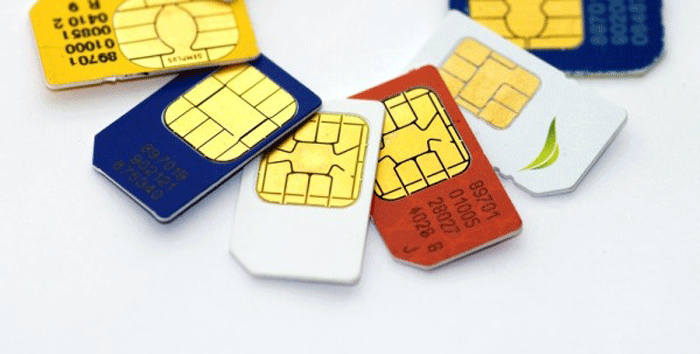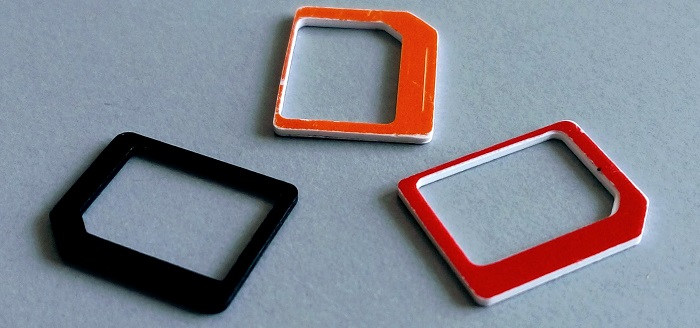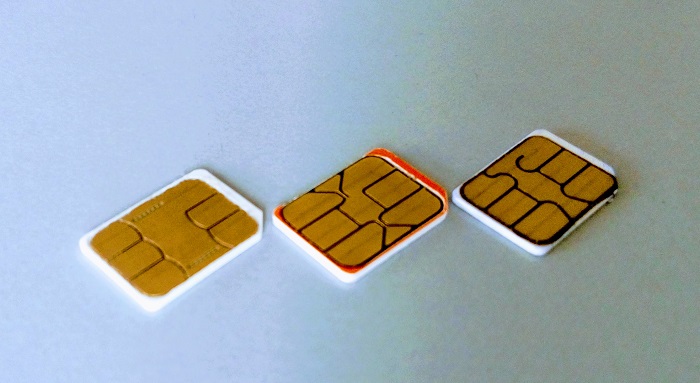As Smartphones get slimmer with every release, something’s gotta give. You’ve heard talk of completely getting rid of audio jacks. Phone manufacturers now also make dual-purpose Micro-SIM/SD card racks. Let’s have a look at the SIM card formats in use today in all manner of devices, from feature phones to the latest cutting-edge iPhone/Samsung Galaxy. In truth, the first SIM was actually the size of a credit card. They measured 85.60 mm × 53.98 mm × 0.76 mm. We have not included this SIM format because it’s really old and most people don’t even remember a time it was in use. For this reason, we will start with its successor, the Mini-SIM.
Mini-SIM
SIM cards of yonderyear came in one standard format: The Mini-SIM. The Mini-SIM is still the most popular SIM format although things are changing. This format measures 25 mm x 15 mm x 0.76 mm in size. Mini-SIMs can be one solid block or ringed in layers like an onion housing various SIM frame formats (Micro-SIM/Nano-SIM). Mini-SIMs are mostly used in basic feature phones.
Micro-SIM
The Micro-SIM is a size smaller than the Micro-SIM. It has the dimensions 15 mm x 12 mm x 0.76 mm. Most current smartphones use this format. It makes more sense, once you consider that many smartphones now come with dual SIM slots. A Micro-SIM can have an onion ring frame encasing the next format, the Nano-SIM. The iPhone 4 was the first smartphone to use a micro-SIM when it launched in June 2010. Other manufacturers soon followed suit.
Nano-SIM
The Nano-SIM is the smallest variant once you have peeled away the onion rings framing the SIM card formats from Mini-SIM inward. It measures 12.3 x 8.8 x 0.67 mm in size, slightly thinner than the Micro-SIM and Mini-SIM. Like its predecessor, the iPhone 5 was the first device to use a nano-SIM card in September 2012, followed by other manufacturers. Currently, all versions of the iPhone since iPhone 5 use Nano-SIM. Most newer brands of major smartphone manufacturers, including Samsung, HTC, Sony, Lenovo, Motorola, Xiaomi, Oppo, e.t.c come with Nano-SIM.
Embedded-SIM/eSIM
The eSIM, also known as the Embedded-SIM is a new SIM card standard being promoted by GSMA, the association representing network operators worldwide. What is interesting to note about e-SIM is that it’s a non-replaceable integrated SIM chip soldered onto a device’s circuit board. Given their nature, information on e-SIMs is rewritable. What this means is that you can easily change your service provider without having to go to an outlet to buy a new SIM card! What’s more, phone manufacturers will have leeway to design even thinner smartphones in the years to come. The front-runners to adopt eSIM, obviously are Apple, Samsung and Google, to name a few. These phone manufacturers are in talks with major network providers to adopt e-SIM cards in their future devices. Currently, Samsung and Apple already have eSIM enabled devices i.e Samsung’s Gear S2 3G, and Apple Watch Series 3. It’s only a matter of time before they achieve mass adoption. So that’s about it. These are your options: Mini-SIM vs Micro-SIM vs Nano-SIM vs Embedded-SIM/eSIM. So then, what SIM card format works best for you?





